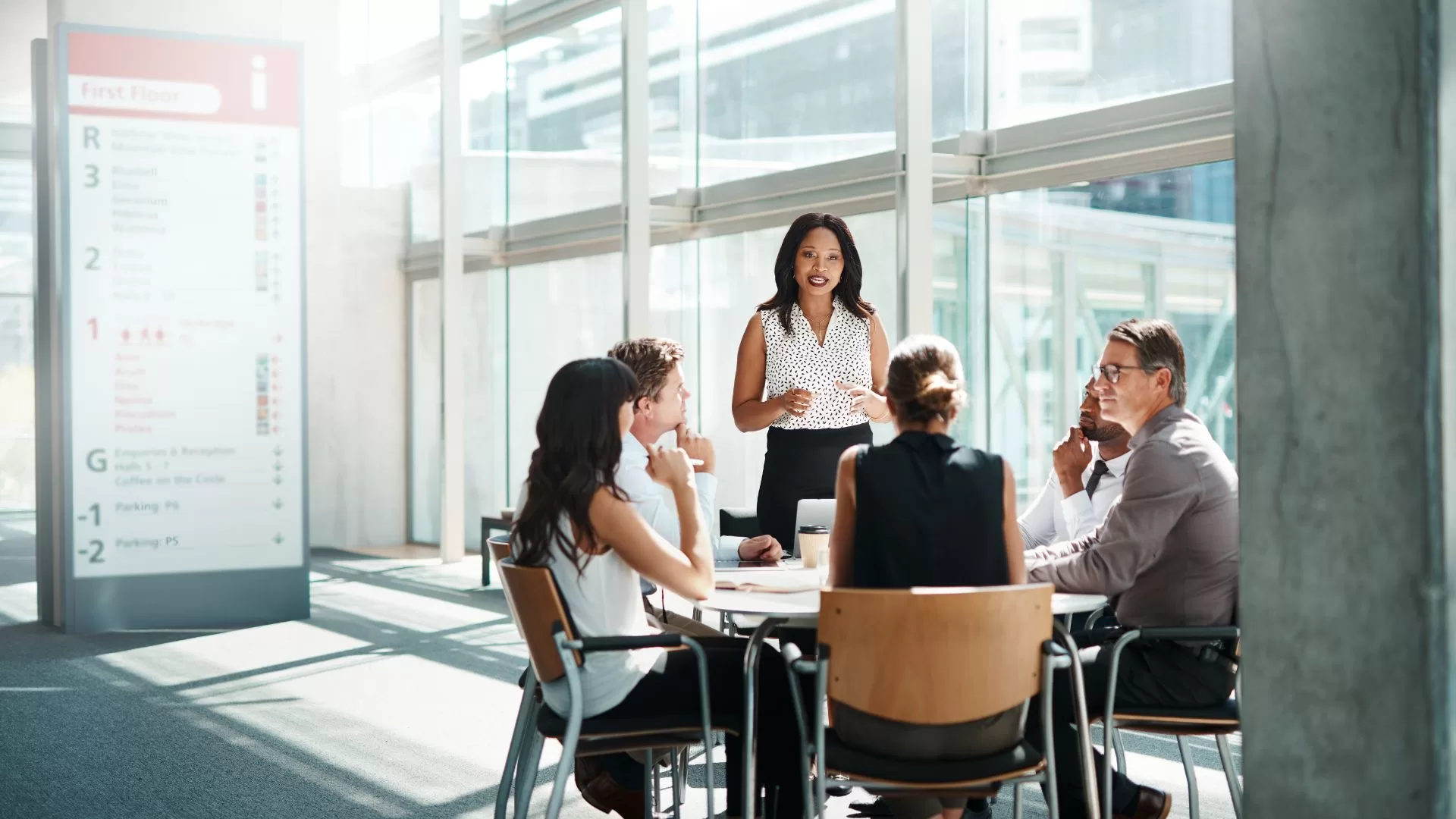
In today’s fast-paced business world, the design of your office space can significantly impact productivity, employee morale, and overall company culture. Modern office design trends are evolving to create more collaborative, comfortable, and inspiring work environments. Let’s explore some of the key trends shaping the future of office design.
- Open-Plan Layouts
Open-plan layouts have become increasingly popular in recent years as they promote collaboration, communication, and a sense of community among employees. By breaking down traditional barriers between departments, open-plan offices can foster a more dynamic and innovative work environment.
However, it’s important to note that open-plan layouts can also have drawbacks, such as noise distractions and lack of privacy. To address these issues, designers often incorporate elements such as sound-absorbing panels, private meeting rooms, and flexible workspaces within the open-plan layout. Having a bare-shell space designed to your specifications is the best way to make the office work for you, and projects such as HM Towers and HM Vibha Towers offer these spaces in bustling business hubs.
- Biophilic Design
Biophilic design incorporates elements of nature into the workplace, such as plants, natural light, and views of greenery. Studies have shown that exposure to nature can reduce stress, improve mood, and enhance creativity. Incorporating biophilic elements into your office design can create a more calming and inspiring atmosphere.
When implementing biophilic design, it’s important to choose plants that are appropriate for indoor environments and require minimal maintenance. Consider using air-purifying plants, such as snake plants or peace lilies, to improve air quality and create a healthier workspace.
- Flexible Workspaces
Gone are the days of rigid, assigned desks. Modern offices are increasingly adopting flexible workspaces that allow employees to choose where and how they work. This can include standing desks, collaborative areas, or private booths for focused work. Flexible workspaces can help to improve employee satisfaction, productivity, and work-life balance.
When designing flexible workspaces, it’s important to consider the needs of different employees. Some may prefer quiet, private areas for focused work, while others may thrive in collaborative spaces. By offering a variety of options, you can create a workspace that meets the needs of everyone on your team.
- Technology Integration
Technology is playing a bigger role than ever in office design. Integrating smart technology into your workspace can enhance efficiency, communication, and collaboration. Consider incorporating features such as smart lighting, temperature control, and digital whiteboards.
However, it’s important to ensure that technology is used to enhance productivity and collaboration, not to distract employees. Consider using technology to create a more efficient and streamlined workflow rather than simply adding more gadgets for its sake. Having the right property ensures that you can integrate your technology into the space seamlessly, and thoughtfully designed spaces such as HM Tech Park ensure just that!
- Focus on Wellness
Modern offices are prioritizing employee well-being. Incorporate wellness features into your design, such as ergonomic furniture, meditation rooms, or on-site fitness facilities. This can help to improve employee health, reduce stress, and increase job satisfaction.
When designing for wellness, it’s important to consider the needs of your employees. For example, if your employees are primarily sedentary, you may want to invest in standing desks or ergonomic chairs. If your employees are stressed, you may want to create a designated relaxation area or offer on-site meditation classes.
- Personalized Workspaces
Allow employees to personalize their workspaces to reflect their individual styles and preferences. This can help to create a sense of ownership and belonging. Consider providing options for adjustable furniture, customizable décor, or even personal storage spaces.
When designing personalised workspaces, it’s important to balance individual preferences with the overall aesthetic of the office. Consider creating a design guide that outlines the acceptable range of customisation options to ensure a cohesive look and feel.
- Sustainable Design
Sustainability is becoming increasingly important in modern office design. Incorporate eco-friendly materials, energy-efficient lighting, and sustainable practices into your workspace. This can help to reduce your company’s environmental impact and create a more sustainable future.
When designing a sustainable office, consider factors such as energy efficiency, water conservation, and waste reduction. You may also want to choose materials that are sustainably sourced and have a low environmental impact. With the increasing number of people using electric vehicles, charging stations in the parking area are becoming more and more essential.
- Collaboration Zones
Create designated areas for collaboration and teamwork. These spaces can include brainstorming rooms, huddle areas, or open-plan meeting spaces. By providing employees with opportunities to collaborate and share ideas, you can foster innovation and creativity.
When designing collaboration zones, consider the types of activities that will take place in these spaces. For example, if you need a space for brainstorming sessions, you may want to include whiteboards, flip charts, and comfortable seating. If you need a space for informal meetings, you may want to create a more casual and relaxed atmosphere. Having professionally planned offices can help you to ensure that there is an inclusion of the different areas necessary, as well as that these are conducive to a workspace. Experienced realtors such as HM Constructions offer commercial spaces that are thoughtfully designed and well-built, making the office space a pleasure to be at!
Modern office design is constantly evolving to meet the changing needs of businesses and employees. By incorporating these trends into your workspace, you can create a more productive, engaging, and inspiring environment for your team. Remember to consider the specific needs and preferences of your employees when designing your office space.